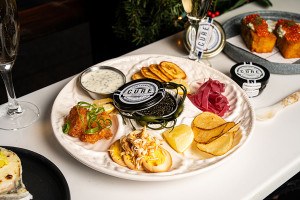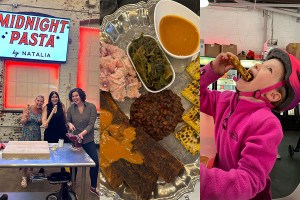Gastronaut: No Child Left Behind
Making kids feel welcome in good restaurants is the best way to guarantee a generational commitment to food in any city. It’s time for more of that in Philly.
I hate screaming children in restaurants.
I hate it when they run around like small, loud monsters—getting in the way of the staff and bothering everyone in the house while their parents sit by and do nothing.
I hate kids’ menus full of chicken fingers and hot-dog chunklets; parents who use waitresses as free babysitters; and the looks on the faces of other diners when shown to a table within the blast radius of any child brought out to dine.
But you know what bothers me more than any of this? To spend an evening in a good restaurant anywhere in Philly and see no children.
We’re very fortunate. We are living (and eating) in a golden age. Everywhere we look, there are great restaurants and great chefs doing great things. It’s hard to imagine a moment when we won’t have it so good.
But I know a bit about the life cycle of trends. And there is absolutely nothing to suggest that this golden age is going to be different from any other golden age—which is to say that someday, it will end. There will come a time when everything isn’t quite so culinarily wonderful as it is now. So the reason I worry when I see restaurants with no children in them is that every night it happens is a night that takes us one step closer to that inevitable bad day.
We learn to eat well the same way we learn to do anything else well: through practice. No one sits down at a table for the first time with an appreciation for foie gras or an understanding of tacos. We have to learn all of these things, and we learn them by doing. There’s no reason why that education can’t start young.
Speaking as a father and a professional eater—a man who hauled his daughter to her first fine-dining meal when she was two weeks old, and who has sat beside her ever since in street-corner pho shops and white-tablecloth temples of gastronomy—it’s not even tough. If kids are brought up understanding restaurant manners, they won’t be the terrors that other customers roll their eyes at. If they’re offered better than McNuggets, they’ll learn early to appreciate the vast and varying options available to them. If they are shown how important food is—how rare is the good, how plentiful the bad, and how special those magic moments are when everything comes together in a perfect dance—they will remember and internalize that and grow up knowing something absolutely vital about the human experience: that sometimes a meal means more than simply filling your snack hole.
Yes, all of this can be learned as a young adult. When you’re 16 and 18 and 21, restaurants can be a brave new world, entrée into a grown-up universe to be as carefully negotiated as any other. But to those who’ve learned to eat well as kids, there is no learning curve. These will be the kids who form the next generation of eaters and, more important, the next generation of chefs. And who will extend this golden age of dining beyond a mere eye-blink of faddishness.
First appeared in the June, 2013 issue of Philadelphia magazine.
Illustration by Kagan McLeod


